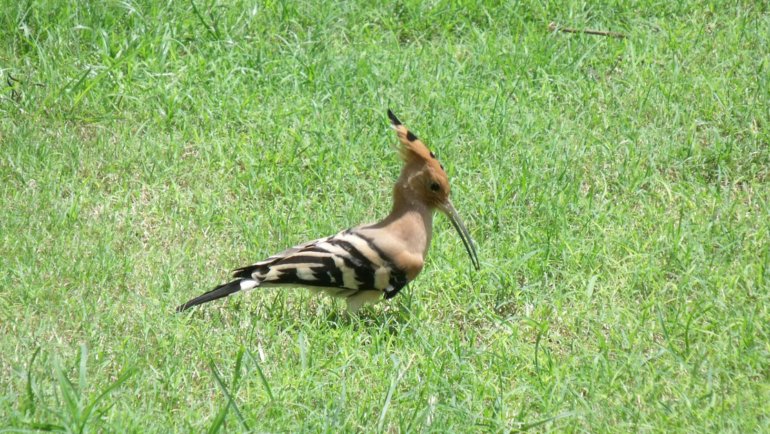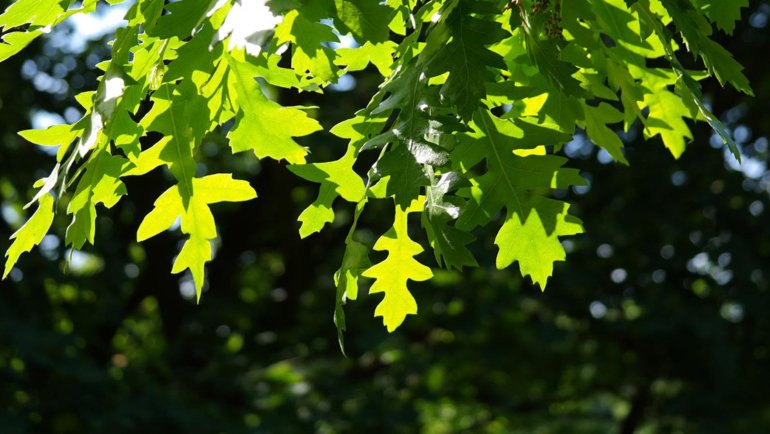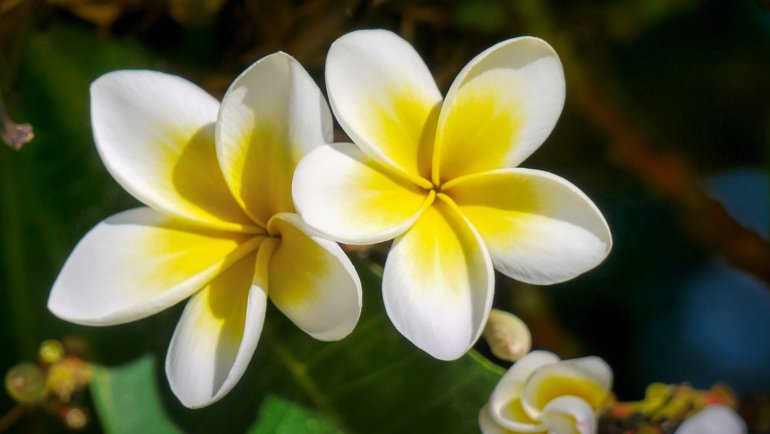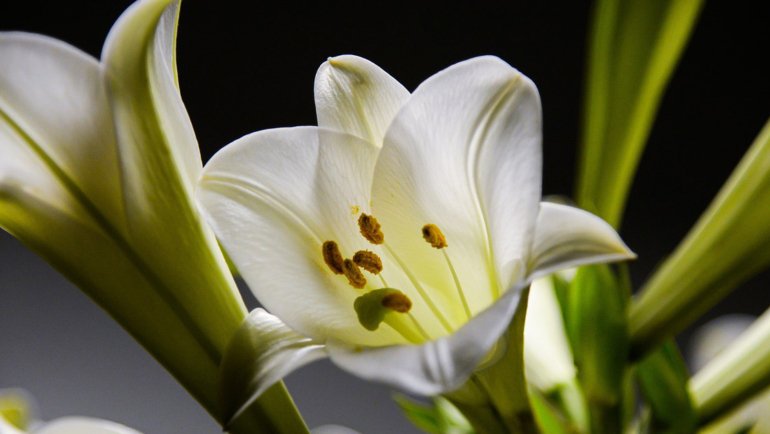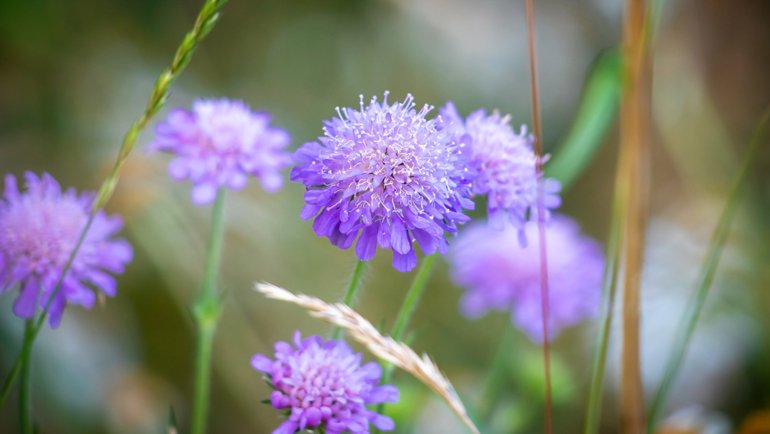A land of enchanting beauty and contrasts, Indonesia is not just an archipelago of 17,000 islands, but also a melting pot of cultures, traditions, and nature’s marvels.
In a place where biodiversity thrives, it’s no surprise that the country boasts not one, but three national flowers, each holding a unique significance.
Journey with us as we delve into the captivating world of Indonesia’s three floral emblems: the Melati Putih, Anggrek Bulan, and the rare Padma Raksasa Rafflesia.
The 3 Floral Emblems of Indonesia
Melati Putih, Sambac Jasmine (Jasminum sambac) – The National Flower
A symbol of purity, grace, and sincerity, the Melati Putih is a petite white flower that exudes a sweet fragrance. Often considered sacred in Indonesian tradition, it embodies the essence of graceful simplicity.
This perennial flower showcases small, shiny, dark green leaves and white, fragrant flowers. Blossoming throughout the year, its five-petaled blooms are a symbol of Indonesia’s everlasting beauty.
Anggrek Bulan, Moon Orchid (Phalaenopsis Amabilis) – The Flower of Charm
Hailed as the “Flower of Charm,” the Anggrek Bulan, or Moon Orchid, is a radiant symbol of Indonesia’s mesmerizing beauty. Possessing an elegance that captures hearts, the Moon Orchid is renowned for its long-lasting blooms.
This orchid is characterized by its white, often slightly pink-tinted flowers that can bloom for up to six months, making it one of the longest-blooming orchids in existence. With its branched inflorescence, it graces the Indonesian landscape two to three times a year once it reaches maturity.
Padma Raksasa Rafflesia (Rafflesia arnoldii) – The Rare Flower
A testament to Indonesia’s incredible biodiversity, the Rafflesia stands as a symbol of uniqueness. This parasitic plant is renowned globally for producing the world’s largest individual flower.
Unlike the delicate Melati Putih or the charming Moon Orchid, the Rafflesia is an anomaly with its massive, fleshy petals and a characteristic pungent odor. This flower, often spanning over a meter in diameter, has no stems, leaves, or true roots, making its existence all the more intriguing.
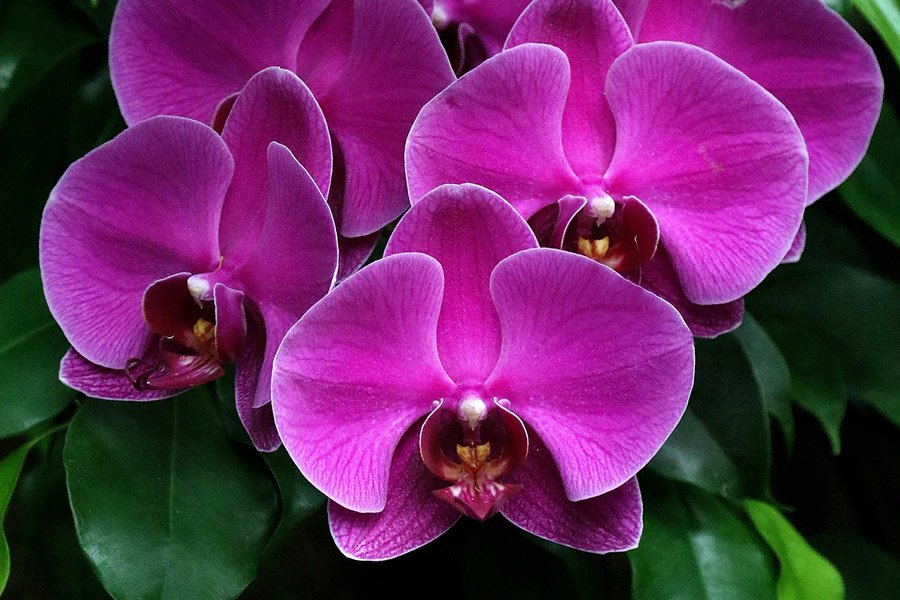
Where Do These Flowers Grow?
Sambac Jasmine (Jasminum sambac): Predominantly thriving in the tropics, the Melati Putih finds its roots deeply embedded in the Indonesian landscape. Flourishing in the fertile soils of the country, especially Java, this flower appreciates warm and humid conditions. While Indonesia remains its primary home, the Jasminum sambac has also been cultivated in other parts of Southeast Asia and the Indian subcontinent.
Moon Orchid (Phalaenopsis Amabilis): The Moon Orchid favors Indonesia’s lowlands, relishing the moist and temperate climates characteristic of these regions. It predominantly grows on trees as an epiphyte, drawing nutrients from the air and rain. While the archipelago is its primary habitat, similar climatic conditions in other parts of Southeast Asia, such as the Philippines and Malaysia, have also proven conducive to its growth.
Rafflesia (Rafflesia arnoldii): This botanical giant prefers the rainforests of Sumatra and Borneo in Indonesia. Given its parasitic nature, the Rafflesia grows on the Tetrastigma vine, an integral part of its ecosystem. The damp, shaded floors of these dense forests offer the ideal conditions for the Rafflesia to thrive.
The Flowers in The Ecosystem
Sambac Jasmine: Beyond its cultural significance, the Melati Putih plays a role in the ecosystem as a source of nectar for various pollinators, including bees and butterflies. Its sweet scent, especially during the nighttime, acts as a magnet for nocturnal pollinators, ensuring its propagation and survival.
Moon Orchid: As with many orchids, the Moon Orchid has developed a symbiotic relationship with specific fungi, which assist the plant in accessing nutrients. This orchid also attracts a variety of pollinators, primarily moths, with its alluring fragrance and vibrant appearance. The orchid’s reliance on moths for pollination has led to an evolutionary dance where its appearance and scent have evolved to best attract these nighttime visitors.
Rafflesia: The Rafflesia’s unique, pungent odor, often likened to the smell of decaying flesh, is not without purpose. This scent serves to attract carrion flies, which are the primary pollinators of this flower. In a sophisticated mimicry act, the Rafflesia not only emits a similar smell to rotting meat but also possesses a similar color and texture, ensuring the flies are deceived into assisting with its pollination process.
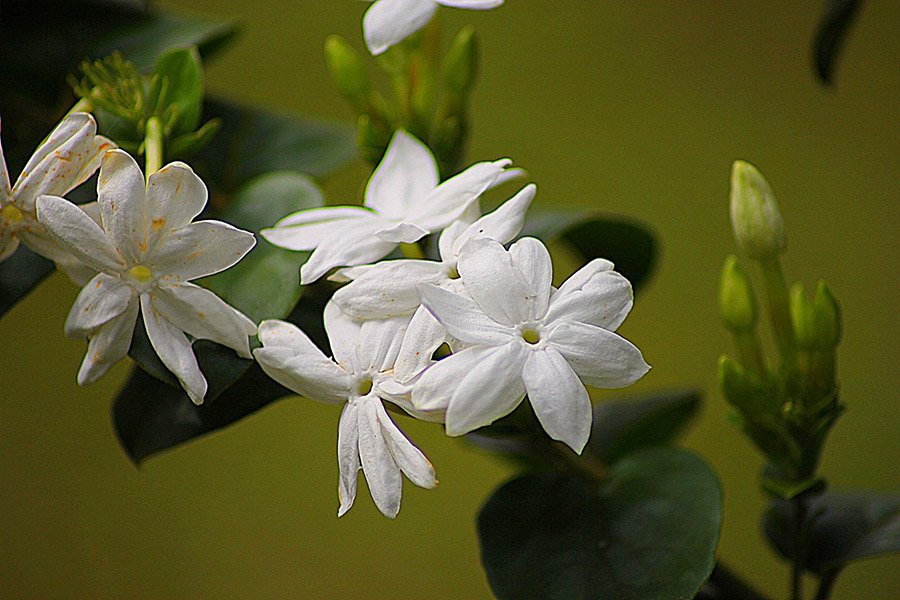
Symbolism and Meaning: Why and When Did These Flowers Become National Flowers of Indonesia?
Sambac Jasmine: Recognized as Indonesia’s national flower, the Melati Putih has long stood as a symbol of purity, sacredness, graceful simplicity, and sincerity. This veneration predates its official recognition in 1990.
Indeed, even during the reign of Indonesia’s first president, Sukarno, Melati Putih was informally considered the nation’s emblematic bloom. This profound respect is also woven into the country’s cultural heritage. For instance, it holds a prominent place in wedding ceremonies, particularly in Java, where the unopened buds are crafted into jasmine garlands named “roncen melati.”
The flower’s duality is evident in its significance: while it represents life, beauty, and joyous occasions like weddings, it also resonates with themes of spirit and death, symbolizing the brave souls who laid down their lives for the nation.
Moon Orchid: Designated as the “Flower of Charm,” the Moon Orchid was chosen to symbolize Indonesia’s breathtaking beauty. Its elegance, longevity in blooming, and mesmerizing appearance make it a fitting emblem of the nation’s allure.
Rafflesia: As the “Rare Flower” emblem, the Rafflesia, along with the Titan arum, encapsulates Indonesia’s unparalleled floral biodiversity.
This massive bloom, often termed the “corpse flower” due to its distinctive odor, signifies the country’s commitment to conserving its unique ecosystems and biodiversity. The flower’s uniqueness and rarity make it a symbol of Indonesia’s unmatched natural treasures.
All three flowers were officially recognized on World Environment Day in 1990, underscoring the nation’s dedication to environmental preservation.
Where Are These Flowers Featured in Indonesia?
Sambac Jasmine: While not depicted on the national flag or banknotes, the Melati Putih is deeply entrenched in Indonesia’s cultural practices. It is a pivotal element in traditional Javanese and Sundanese wedding ceremonies, where the bride’s hair is adorned with strands of jasmine garlands. The flower’s association with both life and death ensures its presence in myriad Indonesian traditions, from joyous occasions to funerals. Moreover, patriotic songs and poems, such as “Melati di Tapal Batas” and “Melati Suci,” celebrate the Melati Putih as a representation of the nation’s fallen heroes.
Moon Orchid: The Moon Orchid doesn’t feature prominently on national symbols like flags or currency, but its beauty is showcased in various horticultural events and shows throughout the country. Its reputation as one of Indonesia’s national flowers ensures its cultivation in gardens and homes as a symbol of pride.
Rafflesia: This impressive flower’s rarity means that while it isn’t regularly featured in everyday Indonesian life, it is a key attraction in national parks and conservation areas. The Rafflesia serves as a symbol of the rich biodiversity that Indonesia aims to protect and is featured in various awareness campaigns about conservation.
Names of The Flowers
- Melati Putih (Jasminum sambac): It is usually referred to as Arabian Jasmine or Sambac Jasmine. It’s known as “Sampaguita” in the Philippines and “Pikake” in Hawaii.
- Anggrek Bulan (Moon Orchid – Phalaenopsis Amabilis): While it’s called the “Moon Orchid” in Indonesia, it’s often referred to as the “Moth Orchid” in English due to the shape of its blooms resembling moths in flight.
- Padma Raksasa Rafflesia (Rafflesia arnoldii): It is universally known as the “Corpse Flower” due to its smell when blooming, or simply Giant Rafflesia.
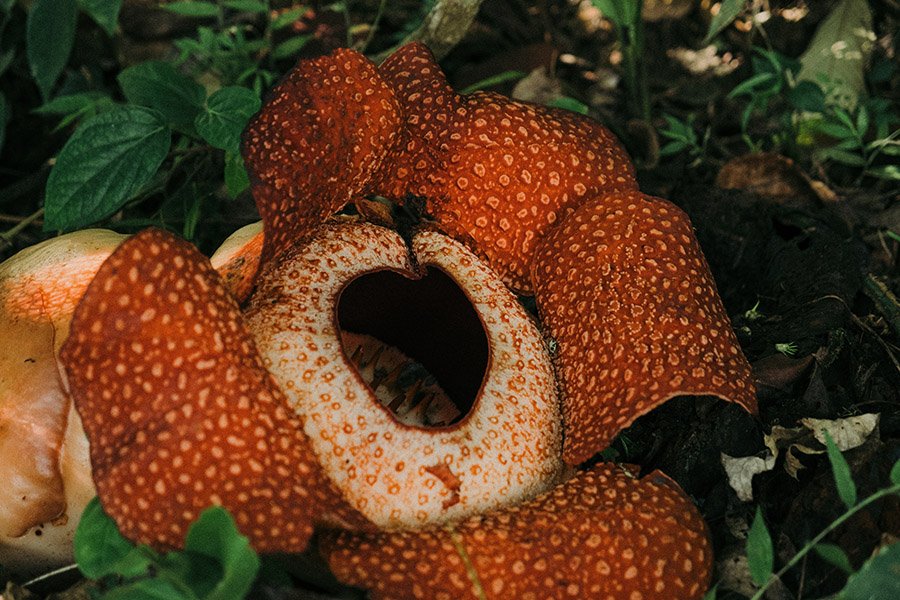
Interesting Facts About Indonesia’s National Flowers
- The Sambac Jasmine flower plays a significant role in traditional Indonesian, especially Javanese, weddings.
- The Sambac Jasmine flower’s fragrance is used in perfumes and is the primary scent in the famous “Jasmine Tea.”
- In patriotic songs, Sambac Jasmine or Melati Putih is seen as the representation of fallen heroes.
- The Moon Orchid is one of the longest-blooming orchids, with the bloom lasting from two to six months.
- The Moon Orchid, Phalaenopsis Amabilis is one of the most cultivated orchid varieties for its beautiful, long-lasting flowers.
- The bloom of the Rafflesia plant can reach a diameter of around one meter, making it the largest individual flower in the world.
- The Rafflesia flower emits a repulsive odor, similar to that of rotting meat, which attracts flies for pollination.
- The Rafflesia is a parasitic plant, meaning it takes its nutrients from another plant.
How to Grow These Flowers
- Melati Putih (Sambac Jasmine – Jasminum sambac):
- Climate: Prefers tropical and subtropical climates.
- Soil: Well-draining soil, rich in organic matter.
- Sunlight: Requires full to partial sun.
- Watering: Keep the soil consistently moist, but avoid waterlogging.
- Anggrek Bulan (Moon Orchid – Phalaenopsis Amabilis):
- Climate: Thrives in a humid, warm climate.
- Soil: Prefers orchid potting mix instead of regular soil.
- Sunlight: Indirect light is best, as direct sunlight can burn the leaves.
- Watering: Water once a week, allowing the orchid mix to almost dry out between watering.
- Padma Raksasa Rafflesia (Rafflesia arnoldii):
- Climate: Tropical rainforest climate.
- Soil: Doesn’t require soil as it’s a parasitic plant. Instead, it derives nutrients from a host vine.
- Sunlight: Prefers shady areas under the canopy of the rainforest.
- Watering: Relies on the moisture and nutrients of the host plant. Not suitable for traditional cultivation due to its parasitic nature.
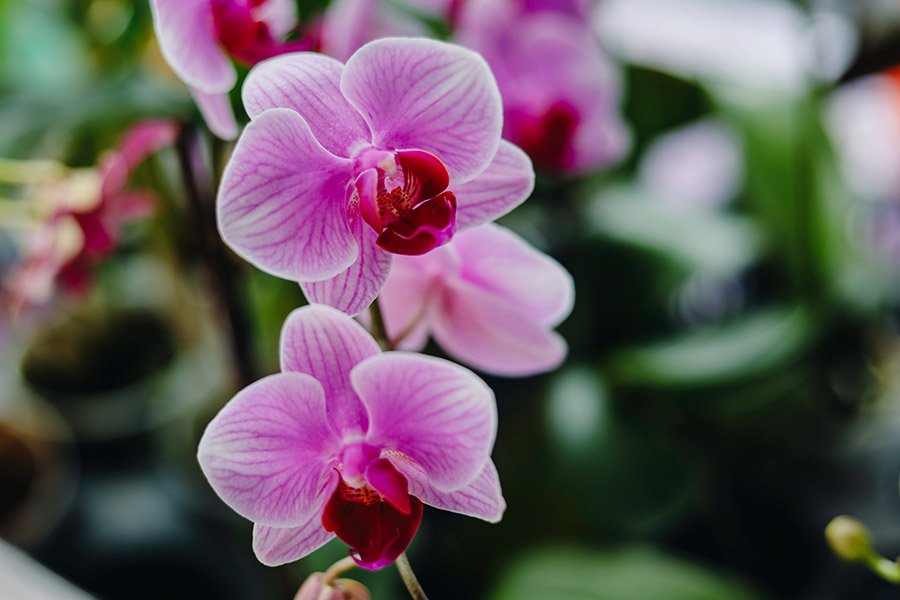
Other Beautiful Flowers Found in Indonesia
- Kantong Semar (Nepenthes sp.): Often referred to as the tropical pitcher plants or monkey cups, these are carnivorous plants that have modified leaves known as pitfall traps—a prey-trapping mechanism featuring a deep cavity filled with digestive liquid.
- Bunga Bangkai (Titan Arum – Amorphophallus titanum): Another “corpse flower” because of its unpleasant odor, this plant boasts the largest unbranched inflorescence in the world. It’s native to the rainforests of Sumatra and Borneo.
- Kecombrang (Etlingera elatior): Also known as torch ginger, the flower is not only beautiful but also edible. Its aromatic flesh can be found in various Indonesian dishes.
- Kenanga (Cananga odorata): Widely known as Ylang-Ylang, this flower is often used in aromatherapy and is the primary note in Chanel No. 5 perfume.
- Bunga Sepatu (Hibiscus rosa-sinensis): Commonly known as the Chinese hibiscus, this flower is not only ornamental but also has various medicinal uses in traditional practices.
Frequently Asked Questions
What are the three national flowers of Indonesia?
The three national flowers of Indonesia are Melati Putih (Jasminum sambac), Anggrek Bulan (Moon Orchid – Phalaenopsis Amabilis), and Padma Raksasa Rafflesia (Rafflesia arnoldii).
Why does the Rafflesia flower smell so bad?
The Rafflesia emits a strong odor similar to rotting meat to attract flies for pollination.
How often does the Moon Orchid bloom?
The Moon Orchid usually blooms two to three times a year once it has reached maturity.
Why is the Melati Putih considered sacred in Indonesia?
The Melati Putih symbolizes purity, sacredness, graceful simplicity, and sincerity. It’s also deeply rooted in Indonesian traditions, often representing life, beauty, and death.
Are there other significant flowers in Indonesia aside from the three national flowers?
Yes, Indonesia, being a tropical country, boasts a vast diversity of flora. The Titan Arum, torch ginger, and Ylang-Ylang are just a few examples of the country’s rich botanical heritage.
When were these flowers officially recognized as the national flowers of Indonesia?
All three flowers were officially recognized on World Environment Day in 1990.
